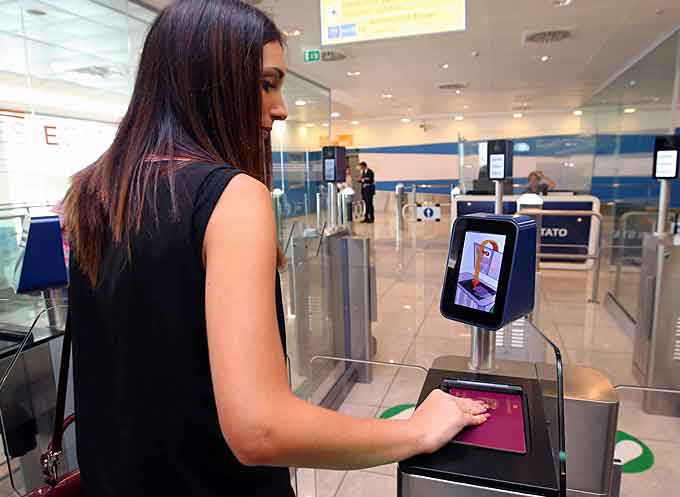
Airlines and airports are investing in biometric technology to deliver secure and easy travel for passengers, as a key priority, according to new research by global IT provider SITA.
The SITA 2018 Air Transport IT Insights show how biometrics are being incorporated into the evolution of self-service at the world’s airports, and note that over the next three years, 77% of airports and 71% airlines are planning major programs or R&D in biometric ID management.

“Secure and seamless travel is a must for the air transport industry,” explains Barbara Dalibard, CEO, SITA.
“It is encouraging to see that both airlines and airports are investing in biometric technology to deliver a secure, paperless way to identify passengers across multiple steps of the journey.”
“We have already seen great success where we have implemented it at airports across the world. As the research shows, integration causes challenges and the variety of legislative demands can be daunting for airlines and airports.”
“To deliver a seamless passenger experience, we must all collaborate – airlines, airports, governments and industry suppliers – and use technology to automate, and even eliminate, tedious processes.”
“We achieve the best results when we work together, this has been most apparent when we incorporate secure biometrics into the passenger journey.”
SITA delivers identity management solutions, including biometric systems, that eliminate the need for manual checks to improve the passenger experience while helping airlines and airports across the world meet the variety of regulations from Governments and border agencies.
The most common of these is identity verification at self-service check-in kiosks.
This is already in use at 41% of airports and 74% have plans to deploy the technology by the end of 2021, and self-boarding gates using biometrics with ID documentation, such as a passport, are also set to become commonplace over the next three years, with 59% of airports and 63% of airlines expecting to use them.
(See the future of air travel – where we can truly begin to provide a walkthrough experience from check-in to the aircraft door – is fast becoming a reality. The emergence of ‘single token travel’ is probably the most exciting development for passengers hoping to fast-track through the airport. Courtesy of SITA and YouTube. Posted on Mar 15, 2016)
SITA’s research highlights the industry faces some challenges for the full adoption of biometrics for passenger identity checks.
More than one third of airlines cite integrating the tools and technologies at airports, and a lack of standards for processes and technologies for integrating checks, as the major challenges.
For airports, the situation is similar, though 39% of them say meeting government and legislative requirements is also a major challenge, and airlines and airports are also considering new technologies for passenger identity management.
One example is blockchain; 40% of airlines and 36% of airports believe the main benefit that blockchain can provide is to streamline this process, for example by reducing the need for multiple ID checks.

Overall, investment in technology is rising with future predictions for both operating and capital spend very strong in 2018 with a forecast of 3.67% IT spend as a % of revenue.
Airport spend will be strong too, with a forecast of 5.69% of revenue for this year.
Airlines are also investing in new technologies which offer them strategic and operational benefits.
Artificial intelligence (AI) is seen as beneficial across a range of airline operations with 84% of airlines planning to have major or R&D programs in place by 2021.
This is up from 52% in last year’s survey. Airports too are investing in AI with 61% planning a major program or R&D over the next three years, up from up from just 34% in 2017.
While both airlines and airports are investing in AI, their uses are different. Airlines are looking at the potential of using AI for virtual agents and chatbots with 85% planning to use it here by 2021.
Some 79% of airports are currently using, or planning to use, AI for predictive analysis to improve operational efficiency.
“It is clear that the will of the industry is to change the way we travel by improving efficiency and making the passenger journey as secure and seamless as possible, Dalibard added.”
“This requires a concerted and aligned drive, true collaboration, and SITA is fully committed to this.”
 SITA’s Air Transport IT Insights are well established as the global benchmark research for the air transport industry.
SITA’s Air Transport IT Insights are well established as the global benchmark research for the air transport industry.
Over 180 senior IT executives at the top airlines and airports, representing 39% of global airport and 27% of global airline passenger traffic took part in the 2018 research. The 2018 results once again provide a clear insight on the air transport industry’s IT strategic thinking and developments.
SITA’s 2018 Air Transport IT Insights report is available here.
















